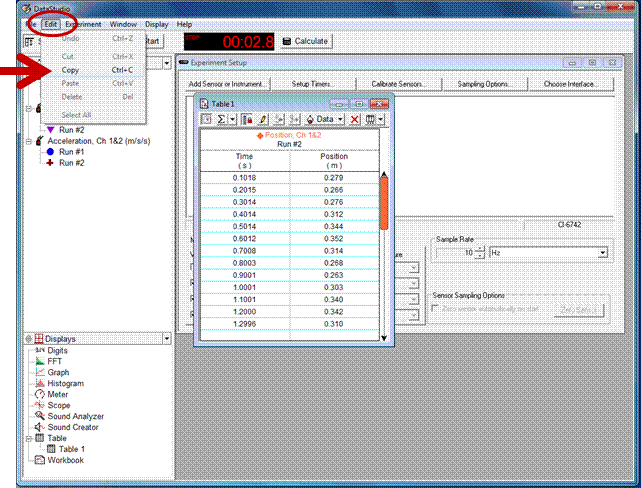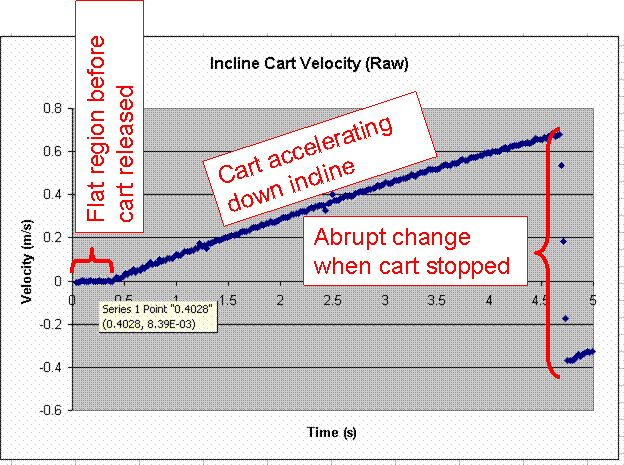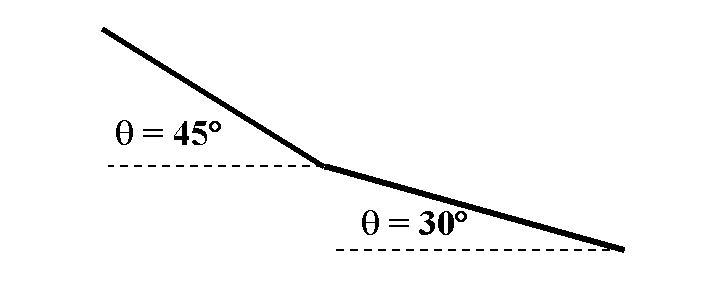


PYL 105



   |
PYL 105 |
   |

Part I: Incline acceleration
Motion down an incline is a famous experiment that goes back to Galileo. He was one of the first to understand motion with constant acceleration. For instance, he knew that if the object started from rest then its displacement varied like time squared. Later Newton would relate the acceleration of an object to the net force acting on that object. In the absence of friction and air resistance forces, theory says that the acceleration down an incline is given by
a = g sin (θ)
where θ is the angle relative to the horizontal and g is 9.8 m/s2, the acceleration due to gravity. We will attempt to verify this result by the following experiment.





| Incline data | ||||||||
| Length of track ( ) | ||||||||
|
Height
( ) |
Angle
|
Theoretical
Acceleration ( ) |
Experimental
Acceleration Trial 1( ) |
Experimental
Acceleration Trial 2( ) |
Experimental
|
Average
Acceleration ( ) |
Standard
|
Percent error bewteen Theoretical and average acceleration |
|
|
|
|
||||||
|
|
|
|
||||||
|
|
|
|
||||||
| Incline data: Mass variation | |||
| Height ( ): | |||
|
Cart
|
Experimental
|
Theoretical
|
Percent error |
|
|
|
|
|
|
|
|
|
|
|
|
|
|
|
You Tube video of dropping objects with different masses on the Moon
Part II: Sketching
Suppose a mass were sliding along a track like the one shown below.

Sketch a graph of what the velocity-versus-time graph would look like. (Assume the track is two meters long and the bend is in the middle.)
